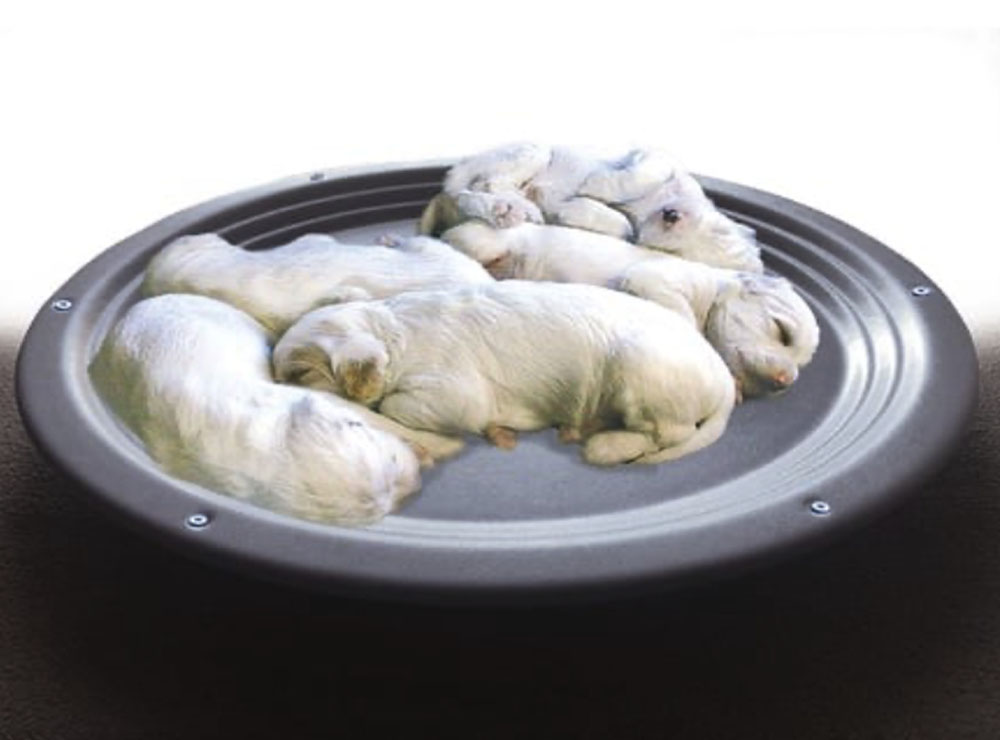5 Most Important Tips For Whelping a Litter of Puppies
Tuesday, March 12th 2024

Whelping a litter of puppies is a delicate process that requires thorough preparation, attentiveness, and an understanding of the needs and behaviors of your dog as she gives birth. Ensuring the health and safety of the mother and her puppies is the most important thing here.
Here are five essential tips for successfully whelping a litter of puppies:
Prepare a Comfortable Whelping Area
- This area should be quiet, warm, easily cleanable, and secluded from all other pets.
- Use a whelping box large enough for the mother to move around comfortably while keeping the puppies contained and safe.
- The box should have low sides for the mother to step over but high enough to prevent puppies from wandering.
- Line the box with soft, absorbable, and replaceable bedding to keep the area clean and dry. If you are using a whelping nest, you will skip this step. Whelping Nest
- Introducing the mother to this area ahead of time will help her feel secure when the time comes.
Know the Signs of Labor
Signs of impending labor include:
- nesting behavior
- restlessness
- loss of appetite
- drop in body temperature (usually below 99°F) 24-48 hours before labor
Keep a close eye on the mother during this time, trying to keep a calm environment to help ease her stress and discomfort.
Have Supplies and Emergency Contacts Ready
Before the mother goes into labor, assemble a whelping kit. This kit should include:
- clean towels, a thermometer, a heating pad or lamp (to keep the puppies warm after birth),
- scissors for cutting umbilical cords (if necessary),
- iodine for disinfecting,
- a bulb syringe for clearing puppies' airways, and a weighing scale to monitor the puppies' growth.
Have your veterinarian's contact information and the number of a nearby emergency animal hospital at hand in case complications arise during the whelping process.
Assist During Birth, If Necessary
While many dogs can whelp without much human intervention, be prepared to assist. This can include:
- gently guiding a puppy out if the mother is struggling,
- using a bulb syringe to clear the puppies' noses and mouths if they're not breathing properly,
- drying puppies with towels to stimulate them.
Always handle the puppies gently and ensure they start nursing as soon as possible, as colostrum intake within the first few hours is critical for their immunity.
Carefully Monitor Post-Birth Health
After all the puppies have been born, closely monitor the health of the mother and her litter.
- Ensure the mother is cleaning and feeding the puppies and that she does not develop postpartum complications such as infection or mastitis.
- Keep an eye on the puppies to make sure they are nursing regularly, gaining weight, and not showing signs of distress.
- The environment should remain warm and clean, with minimal disturbance to allow for bonding and proper development.
By following these tips, you can significantly contribute to the health and well-being of the mother and her puppies during the whelping process. Remember, while preparation and knowledge are key, do not hesitate to contact a veterinarian if you are concerned about the health of the mother or her puppies at any stage.
For help with whelping supplies: Whelping Supplies
For information on the Whelping Nest: Whelping Nest
